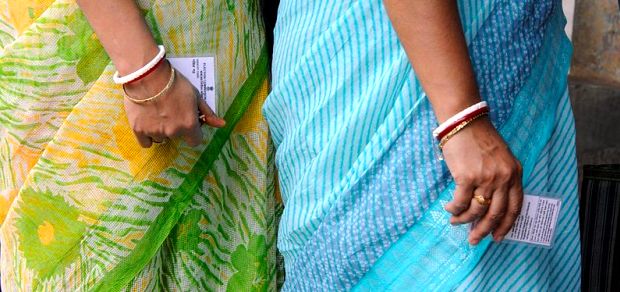No Change In Proportion Of Women Voters In 40 Years

Women in India have much less say in voting outcomes than we would expect. The question is not how many women come out to vote but how many are even registered as voters. Shockingly, the proportion of women in the voters’ list is at the same level that it was in 1971, when the gender break-up of voters was first gathered.
Enrolment of young women in the 18-19 age group has lagged. There were approximately 45.8 million people aged 16 and 17 in Census 2011. Most of them would now be over 18 and eligible to vote in the upcoming General Elections. And yet, only about half of all those who have become eligible to vote are registered as voters so far.
About 23.16 million of all enrolled voters are first-time voters (18-19 years old) and they represent 2.8% of the total registered electorate of 814.5 million as of February 14. Of these, only 41.4% of these first-time voters are females.
The low enrolment of young female voters is surprising –young women accounted for 46.8% of the population of 16-17 year olds in Census 2011.
Low enrolment of young female voters may mostly be attributed to the patriarchal nature of Indian society. That has changed somewhat, with improved literacy, intervention of government and non-government agencies and aggressive efforts of political parties to bring more people to vote. Yet, many young women, especially in rural India, would be unaware of their rights or denied their right by elders.
Enrolment of young women was the slowest in Haryana, a state that has grabbed headlines for seeking brides for young men from places as far as Kerala. The sex ratio in Haryana is among the lowest in the country at 879.
At the national level, enrolment of women voters across all age groups is much better although not truly representative of their share in the population.
Actually, the proportion of women in the voters’ list is at the same level that it was in 1971, when the gender break-up of voters was first gathered. Women voter levels have been between 47.4% and 48% of the enrolled voters between 1971 and 2014, a little lower than their share in India’s population.
The proportion of women in India’s population has been between 48.1% and 48.5% between 1971 and 2011, according to Census data.
Women’s representation on the voters’ list at the state level largely reflects the sex ratio in the state. States with adverse sex ratio typically have lower proportion of women among registered voters. And, the converse is true in states with favourable sex ratio such as Kerala.
In Kerala, a state with the best sex ratio, women constitute about 52% of the voters’ list. In Tamil Nadu, where sex ratio is balanced, the voters’ list too has balanced representation of men and women.
No state can claim 100% registration of all eligible voters. But as the Election Commission attempts to make the voters’ list more inclusive –registration of people of third gender being one big initiative – it needs to make special effort to bring more women into its list, particularly the younger voters. That one effort will go a long way in making women feel empowered.
(The writer is a New Delhi-based journalist)



